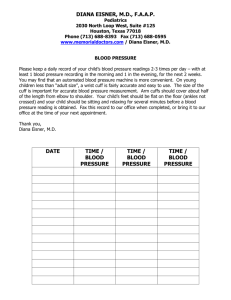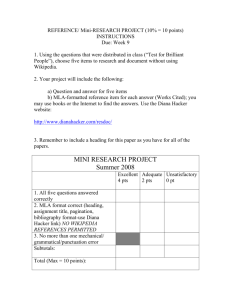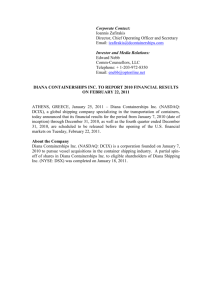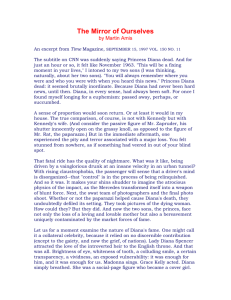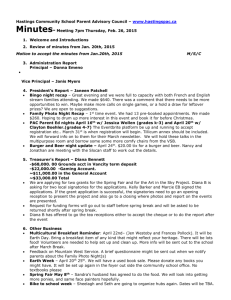Greater Legal Restrictions On The Paparazzi
advertisement
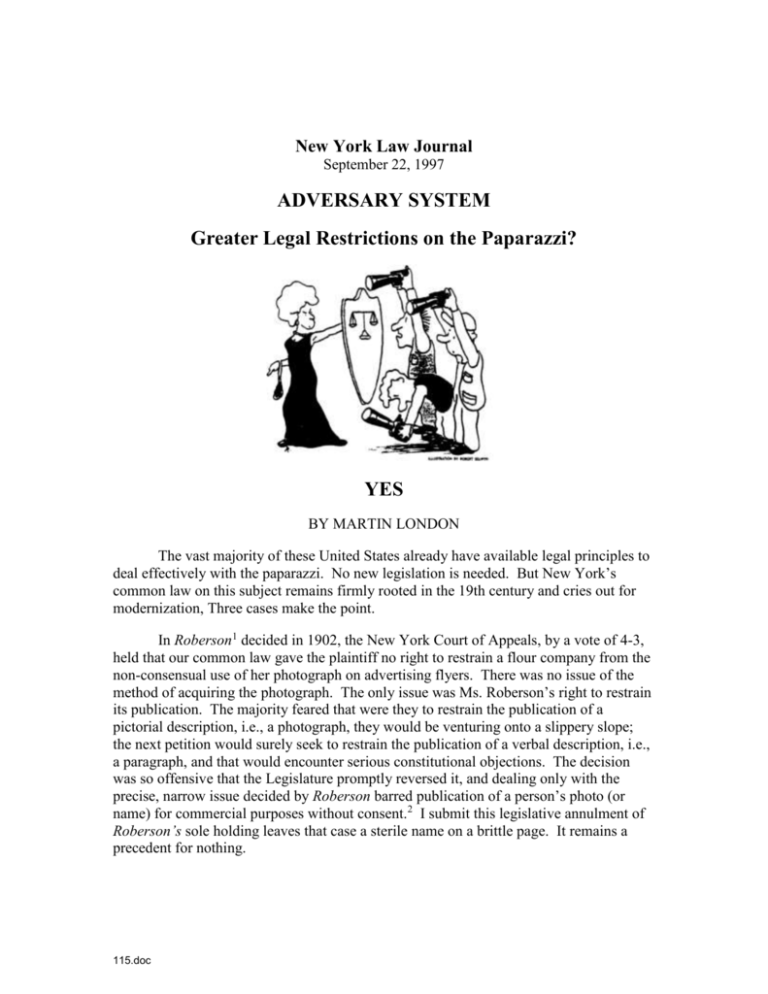
New York Law Journal September 22, 1997 ADVERSARY SYSTEM Greater Legal Restrictions on the Paparazzi? YES BY MARTIN LONDON The vast majority of these United States already have available legal principles to deal effectively with the paparazzi. No new legislation is needed. But New York’s common law on this subject remains firmly rooted in the 19th century and cries out for modernization, Three cases make the point. In Roberson1 decided in 1902, the New York Court of Appeals, by a vote of 4-3, held that our common law gave the plaintiff no right to restrain a flour company from the non-consensual use of her photograph on advertising flyers. There was no issue of the method of acquiring the photograph. The only issue was Ms. Roberson’s right to restrain its publication. The majority feared that were they to restrain the publication of a pictorial description, i.e., a photograph, they would be venturing onto a slippery slope; the next petition would surely seek to restrain the publication of a verbal description, i.e., a paragraph, and that would encounter serious constitutional objections. The decision was so offensive that the Legislature promptly reversed it, and dealing only with the precise, narrow issue decided by Roberson barred publication of a person’s photo (or name) for commercial purposes without consent.2 I submit this legislative annulment of Roberson’s sole holding leaves that case a sterile name on a brittle page. It remains a precedent for nothing. 115.doc Over the succeeding 70 years, the law of privacy developed exponentially. The Restatement, textbook writers, and the “vast majority”3 of the states came to recognize as tortious an intrusion “physically or otherwise upon the solitude, or seclusion of another, or his private affairs or concerns” if accomplished in a manner that “would be highly offensive to a reasonable person.”4 In 1972, Jacqueline Kennedy Onassis won an injuction against photographer Ronald Galella’s tortious behavior.5 The restraint ran against conduct, not publication, and was predicated on several independent legal theories. In its discussion of one of those theories, the right of privacy claim, the District Court not only distinguished Roberson, but established the New York Court of Appeals in 1972 would likely not adopt the same result the Roberson court reached by a bare majority in 1902. A unanimous Second Circuit panel agreed.6 But in 1993, our state’s highest court reaffirmed the 1902 Roberson decision! The facts are stunning, at least to me: A New York Post photographer trespassed onto the secluded grounds of a private psychiatric facility and with a telephoto lens covertly photographed Pamela Howell while she was talking to a fellow patient, Hedda Nussbaton, an obviously “newsworthy” subject. The hospital’s medical director immediately implored the Post’s editor not to publish, as it was imperative to Ms. Howell’s recovery that her hospitalization remain a secret from all but her immediate family. However, the New York Post published the photo on the front page. The New York Court of Appeals dismissed Ms. Howell’s complaint.7 As to the photographer’s conduct, Ms. Howell proceeded on two theories: intentional infliction of emotional distress, and right of privacy. As to the former, the Court concluded that trespassing on the secluded grounds of a private psychiatric institution and covertly photographing a patient whose health would be adversely affected did not even raise at least a jury question on the subject of outrageousness. As to the privacy claim, the Court adhered to its overbroad reading of the 1902 Roberson decision, decided that New York would not follow the common law adopted by the rest of the country, and declared that a right of privacy against intrusion is still not part of New York’s common law. The Howell Court, in support of its adherence to 19th century norms, found that the Legislature had failed to reverse earlier New York cases that also refused to follow the national trend by adopting the intrusion tort. But, bottom line, the Court punted away its own historic right — and duty — to declare and establish the current common law of New York. Clearly the Court could have used Howell to recognize the intrusion tort if it wanted to do so, but it did the opposite. The result is that the paparazzi, along with other assorted snoops, intruders and wackos, enjoy greater immunity in New York than elsewhere. One hopes that in the next case, one that more particularly focuses on abusive conduct rather than on publication rights, the Court will reexamine Roberson, and take a broader look at New York’s legal and cultural landscape at the dawn of the 21st century. 2 115.doc NO BY JAMES C. GOODALE AND JEREMY FEIGELSON What do California legislator Tom Hayden, Chancellor Helmut Kohl of Germany, Professor Cass Sunstein of the University of Chicago Law School, Rolling Stones bassist Bill Wyman and “Batman” star George Clooney have in common? All have joined in the predictable, and wrongheaded, call for new legal restrictions on the press in the wake of Princess Diana’s death. Before we let such prominent folks turn the hard facts of this tragedy into bad law, let’s focus on some realities: To date there is no reason to believe that the press in any sense “killed” Diana, as her brother and others have been so quick to charge. Existing legal rules work. And the press is capable of achieving, through selfregulation, whatever degree of reform the still-developing facts ultimately may warrant. The absence of celebrities and politicians calling for tighter restrictions on drunk driving, or on negligent hotel management, suggests that the attacks of Messrs. Hayden, Clooney et al. arise from a preexisting press bashing agenda — not from anything the world actually knows about the facts of Diana’s death. Current indications are that Diana’s driver, not the press, is culpable. Repeated tests confirm that he was stone drunk — an awful enough fact even if his condition was not exacerbated by drugs, as it may have been. Even if the paparazzi were following Diana and Dodi that night, and Mr. Paul were sober, how could that justify going on a 90 mile-per-hour tear through city streets? The chasers carried cameras, not guns. We also must wonder, but as yet do not know: Would a seat belt have saved Diana’s life, as it apparently did her bodyguard’s? And how did the Ritz Hotel, now reportedly facing prosecution itself, let its drunken employee Henri Paul get behind the wheel? As for the distasteful conduct allegedly engaged in by some photographers in moments after the accident, well, there is no reason to think that conduct made any medical difference in the victims’ fate. Existing laws of general applicability work fine. Worldwide, it is well settled that newsgathering needs do not excuse media lawbreaking. A journalist who stalks, speeds or assaults should be punished, and can be punished without new legislation. Existing U.S. law also already provides for injunctive relief against photographers guilty of extreme misconduct, under the case of Galella v. Onassis. That use, holding in essence that a photographer has no more right than anyone else to physically menace a subject, has been on the books for many years without unduly disturbing the work of either mainstream or tabloid journalists. The line beyond Galella is drawn, quite properly, by the criminal law. Critics may have to acknowledge it, but even the tabloids that have come in for such withering attack actually know how to behave. Before Diana’s death, the U.K. tabs 3 115.doc had honored a long-standing agreement with Buckingham Palace not to print intrusive shots of Princes William and Harry; others now are taking the same tack. All but a single German newspaper have resisted fierce economic temptation by refusing to print photos of the accident scene. Lost in the condemnation, too, have been news items reporting that Diana, in her recent incarnation as a quasi-private citizen, at least sometimes could walk the streets of her favorite London neighborhood in peace. If the investigation ultimately does show culpability on the part of the press in this one instance, then, it is fair to expect that the press can and will correct its conduct going forward without “help” from lawyers and celebrities bent on expanding Galella or from legislators looking for their own headlines. Yet the call for new restrictions undoubtedly will continue, be it a demand for a statutory “bubble zone” around public figures that photographers could not enter (Tom Hayden) to, incredibly, a campaign to abolish the rule of New York Times v. Sullivan that protects the media against defamation liability in cases of non-knowing falsehoods (George Clooney). We should note that, to their credit, a handful of public figures — from Tony Blair to Elton John to George Pataki — have acknowledged that new legal restrictions on the press could be inappropriate. Memo to George Clooney et al: If you want to honor Diana, send a check to her memorial fund. Let’s not misuse her memory to advance unwarranted limits on press freedom. James C. Goodale of Debevoise and Plimpton is the host of “The Communications and Information Revolution” on WNYE-Channel 25. Jeremy Feigelson, a senior associate in Debevoise’s communications law group, handles libel and privacy matters. 1 2 3 4 5 6 7 Roberson v. Rochester Folding Box. Co., 171 NY 538 (1902). N.Y. Civil Rights Law §§50, 51. Galella v. Onasis, 487 F2d 986, 995 (1973). Restatement of Torts 2d §652B. Galella v. Onassis, 353 F.Suppl. 196 (S.D.N.Y. 1972). 487 F2d at 117 Howell v. New York Post, 81 NY2d 115 (1993). 4 115.doc
